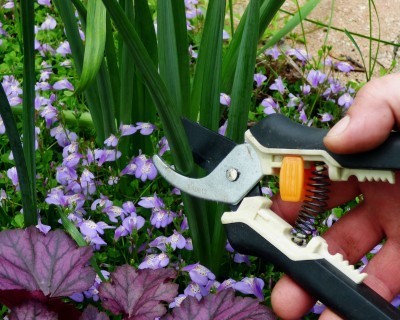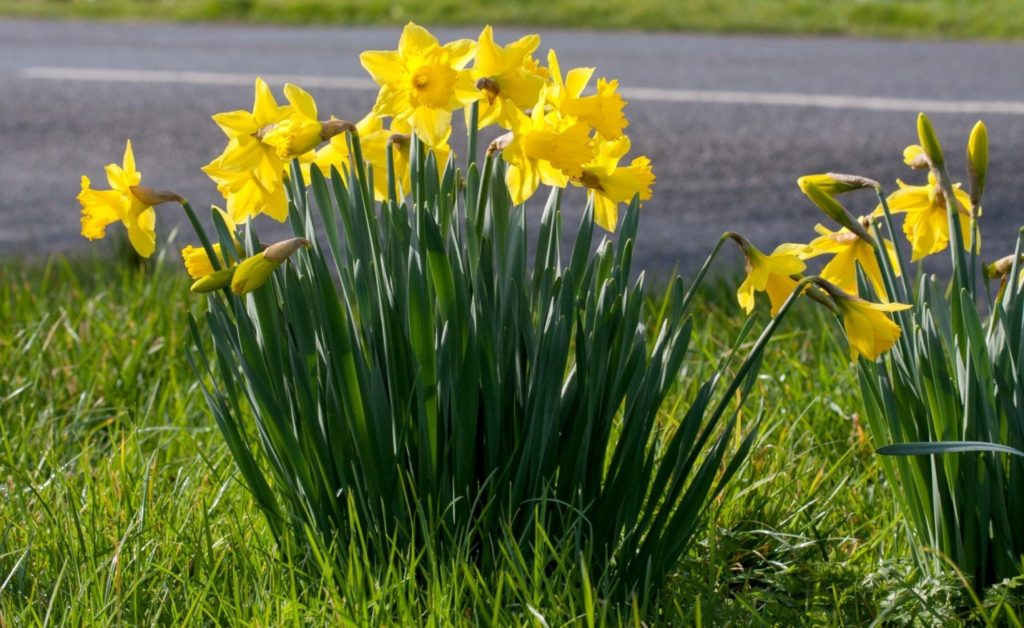New York City’s The Daffodil Project is simply amazing. It was founded in 2001 as a living memorial to September 11. This year, almost 7 MILLION free free bulbs were donated citywide to be planted in public places. It is one of the largest volunteer efforts in the city’s history.
Here’s an except from their website as to how it all began…
Like most New Yorkers in the fall of 2001, NY4P Board Member Lynden Miller was grieving in the aftermath of the 9/11 attacks when she received a fax from Hans van Waardenburg, a Dutch bulb supplier.
“He had written, ‘I feel so distressed and heartbroken for New York. New York and my country have had a long relationship going back to New Amsterdam. … I just wish there was something I could do,’ ” Miller told the New York Daily News in 2011.
“And I sent back, ‘Hans, you don’t have any extra bulbs, do you?’ ”
Around the same time, Parks Commissioner Adrian Benepe had a similar idea: planting yellow daffodils – the color of remembrance – across the city.
Then the ship arrived in New York Harbor, and with it, a gift: one million daffodil bulbs from van Waardenburg and the City of Rotterdam.
That fall, more than 10,000 volunteers joined NY4P to initiate the Project. In 2007, Mayor Bloomberg named the daffodil the city’s official flower in recognition of the millions of daffodils that had bloomed every spring since 2001.
Today, the initiative remains a powerful memorial to the victims of the September 11 attacks, and its spirit is defined by the thousands of New Yorkers who join together to make their neighborhoods, and their city, a more beautiful place to live.

Along with some helpful hints from Richard Clayton…
Growing Daffodils in City Sidewalk Tree Pits
Recognized as the springtime alert clock, the daffodil is also one of the easiest to grow amongst others. They usually come up with a wide range of classic yellow trumpet-shaped flowers, bringing the cheerful and attractive beauty to the sidewalk tree pits. But how to grow these daffodil bulbs? Don’t worry, growing them is easy while planting them only takes very little effort!
Are you ready to liven up the sidewalk? These sunny trumpet flowers will not just appear as a symbol of friendship, but also a sign of the coming warmer weather. Now kick-start with the growing conditions for daffodil bulbs first!
1. Daffodil Bulbs Growing Conditions

Such bulbs would grow best in areas where needs a lot of sunlight, but they also do an excellent job in some shady regions. The top of the hills and other spaces having the great drainage are all the best places to grow these sunny-yellow flowers. Besides, once they’re spaced far apart from each other, the flowers can grow much better than thought.
Most daffodil plants love the neutral – slightly acidic soil with pH of 6.0 – 7.0 and they also need good drainage, or they will easily die.
2. It’s Time To Force Daffodil Bulbs In Soil
Soil preparation
When growing daffodil bulbs, it does not ask you for the in-depth preparation, but merely complete a few necessary things to enhance the soil’s quality. And the most vital part of this whole preparation for daffodil bulbs is how we should ensure the sufficient drainage.
Aside from this, it’s suggested that the soil used for planting daffodils is a good mixture of sand, clay and organic substance. In case you’ve already had the heavy clay soil, then just add more compost and sand. Like other plants and mushrooms, daffodils also need compost to grow well. If it’s the sandy soil, peat moss and bark should be needed here.
Pre-Planting
Amongst seasons, autumn is surely the best time for planting daffodil bulbs since the temperature of soil during this time has lowered so the bulbs would find it all ready to be planted, separated or transplanted for crops.
In terms of choosing the suitable daffodil bulbs, the best buy would go from Mid-February to the end of March. And they need to be stored in a fridge until the planting.
Select stable and small bulbs, it’s because growing them in tree pits means the bulbs should be small to avoid damaging the tree roots. While choosing them, you’ll see some noticeable differences in size between varieties, and most strikingly are the miniature flowers that often own little bulbs.
Now come to the planting site selection, try to search for a nice free draining soil and a lot of sun.
Planting daffodil bulbs

Have the bulbs’ end pointed up and plant them twice as deep as they appear wide (5 inches). Also, feel free to add bulb food to help them get a good start. Make sure to water them well whenever you find the soil drying out.
Another good rule of thumb for bulb planting is, planting about 3 times deeper than the height of a daffodil bulb. For instance, if it’s a 2-inch bulb, then the hold needs to be 6-inches deep. Besides, it’s also recommended to plant these bulbs 3 times the space of bulb apart from each other – this offers them more rooms to grow.
Don’t miss giving the plant some good liquid fertilizers once the foliage starts to show up and also many other times during the season. Doing so will boost flowering.
Try to mulch a tree pit, which is pretty good for both trees and plants since mulch maintains the soil moist and avoid weeds from sprouting.
Daffodil care

Use the low-nitrogen and high-potash fertilizer after the flowering process if you find the bulbs not performing. Water them in the spring and dry conditions. Lift up and divide the clumps especially once the flowering starts to become sparse. And after the flowers bloom, give them enough time to grow and bloom so that they can store energy in the bulbs for the coming year.
To eliminate the dead plants, snip them off and twist the leaves while pulling up.
Dividing
To divide crowded bulbs, wriggle them out of the soil and then start separating the clumps like how to do with a clove of garlic.
3. Daffodil reuse and recycle
These bulbs can be left alone without being disturbed for many years and merely need to raise and separate as they’re overcrowded. Once they complete flowering, try to fertilize them for the coming season’s growth.
The flower leaves usually hold the bulbs food supply, so they should be kept intact. Let’s fold the foliage and secure it with a band once they begin to look like a mess. If you want to hide this messy condition, then plant some perennials or annuals around the bulbs.
In addition, the bulbs can be raised out of the soil once the foliage begins to rot. Leave it attached until it starts to dry off, and then you could get rid of it. Store these daffodil bulbs in a seed tray and bring them in a cool and airy site.
4. What happens when daffodils are not flowering?

What if your daffodils are not flowering? That is when their leaves show in the springtime, but plants do not seem like to flower. And there are also several causes of this, from drought, knotting to the removal of foliage after flowering or basically due to the lack of nutrients in the soil.
Some other reasons could be the shallow planting or overcrowding issue. As for the huge clumps growing in tree pits, then it’s properly a sign that they become overcrowded. Thus, digging them up and re-planting the bulbs will be the best solution.



